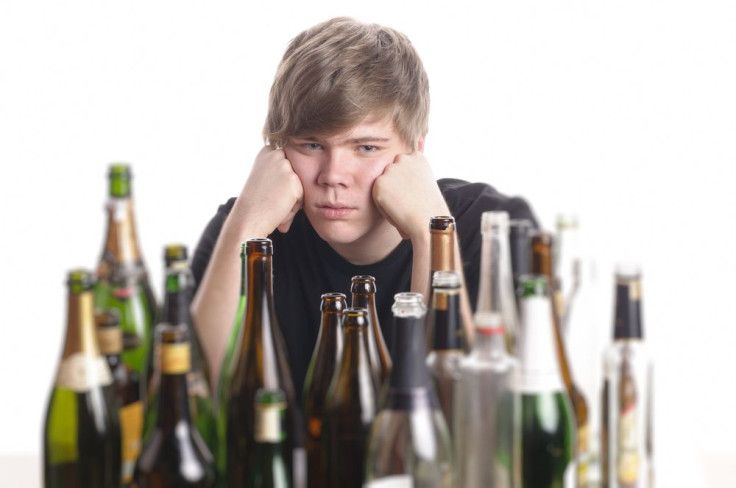Teen Binge Drinking Can Be Predicted With 70% Accuracy By Using Brain Scans

Thousands of teenagers’ brain assessments and genes provide scientists the keys to determining, with high accuracy, who will become binge drinkers in the future. Neuroscientists from the University of Vermont published a large study in the journal Nature revealing the factors that can predict, with 70 percent accuracy, which teens will become binge drinkers.
"Our goal was to develop a model to better understand the relative roles of brain structure and function, personality, environmental influences and genetics in the development of adolescent abuse of alcohol," said lead author Dr. Robert Whelan, a former University of Vermont (UVM) postdoctoral fellow in psychiatry, in a press release. "This multidimensional risk profile of genes, brain function, and environmental influences can help in the prediction of binge drinking at age 16 years."
After looking at the results from a 10-hour comprehensive assessment exam, which evaluated the brain activity and structure of brain scans from 2,400 14-year-old adolescents throughout Europe, they found clear predictors of binge drinking. Their IQ was tested along with cognitive task performance, personality tests, and blood tests were administered.
"Notably, it's not the case that there's a single one or two or three variables that are critical," said Dr. Gunter Schumann, head of the section at the Social, Genetic, and Developmental Psychiatry Centre at the Institute of Psychiatry, King's College London, in the release. "The final model was very broad — it suggests that a wide mixture of reasons underlie teenage drinking."
The 14-year-olds were followed until they were 19, and after assessing their genes and 40 other variables, they were able to predict who would develop a pattern of binge drinking. However, during a follow-up at 16 years old, they were able to predict alcohol abuse, showing that the measures they tested for were accurate long before the 19-year endpoint. "We aimed to develop a 'gold-standard' model for predicting teenage behavior, which can be used as a benchmark for the development of simpler, widely applicable prediction models," Schumann said. "This work will inform the development of specific early interventions in carriers of the risk profile to reduce the incidence of adolescent substance abuse.”
Binge drinking is a common pattern of alcohol abuse in which a person’s blood alcohol concentration (BAC) jumps to 0.08 percent or higher. Women who consume four or more drinks in two hours or men who consume five or more drinks are considered binge drinkers. This isn’t considered moderate drinking, but instead bouts of heavy alcohol intake, according to the Centers for Disease Control and Prevention.
The best predictors of binge drinking were personality, sensation-seeking traits such as adrenaline junkies, lack of conscientiousness or self-awareness, teens who experienced several stressful events, and of course a family history of drug abuse. However, having just one drink at 14 years old was the biggest predictor of someone becoming a binge drinker.
Neuroscientists believe that by using the information from the teens' brain scans, they'll be able to study the development of substance abuse patterns in the context of moderating environmental factors, such as exposure to nicotine, drugs, and stress. "There's refining and sculpting of the brain, and most of the gray matter — the neurons and the connections between them, are getting smaller and the white matter is getting larger," said co-author Dr. Hugh Garavan, UVM associate professor of psychiatry, in the release. "Kids with more immature brains — those that are still larger — are more likely to drink."
Source: Wong CP, Yacubian J, Ziesch V, et al. Neuropsychosocial profiles of current and future adolescent alcohol misusers. Nature. 2014.



























